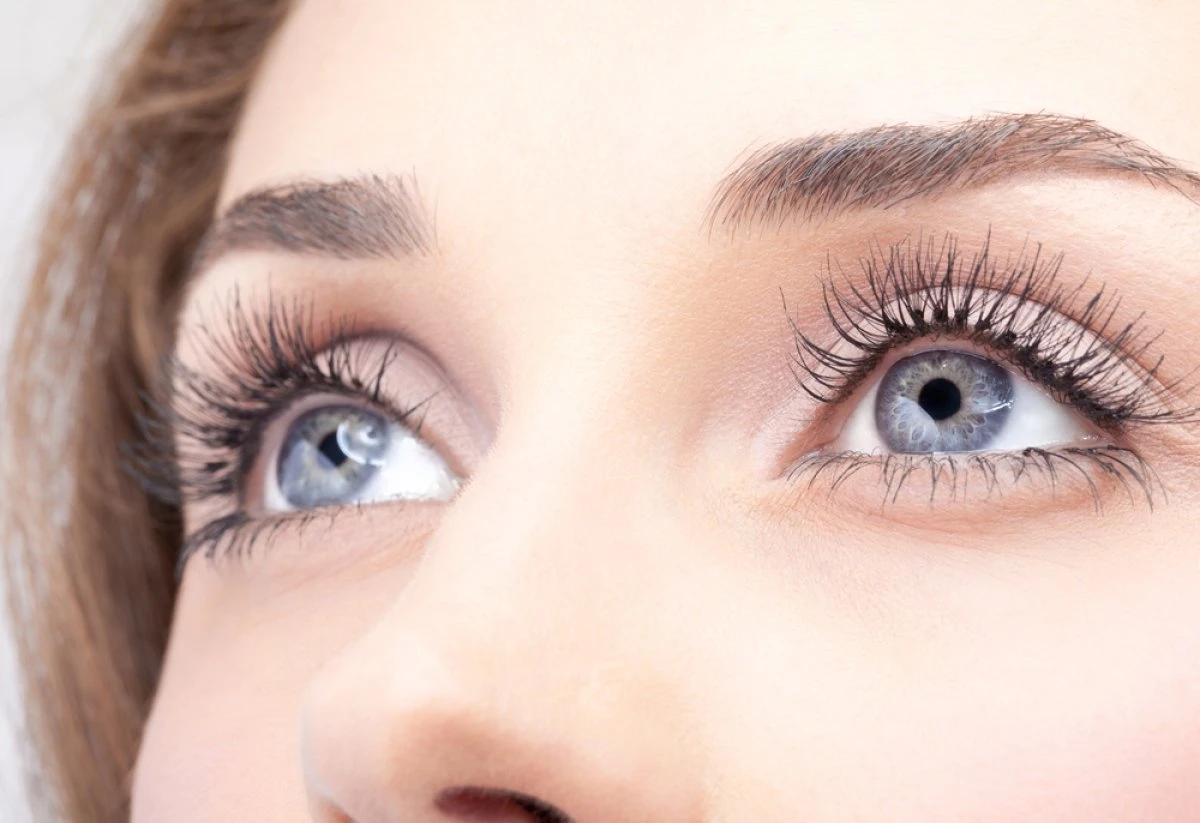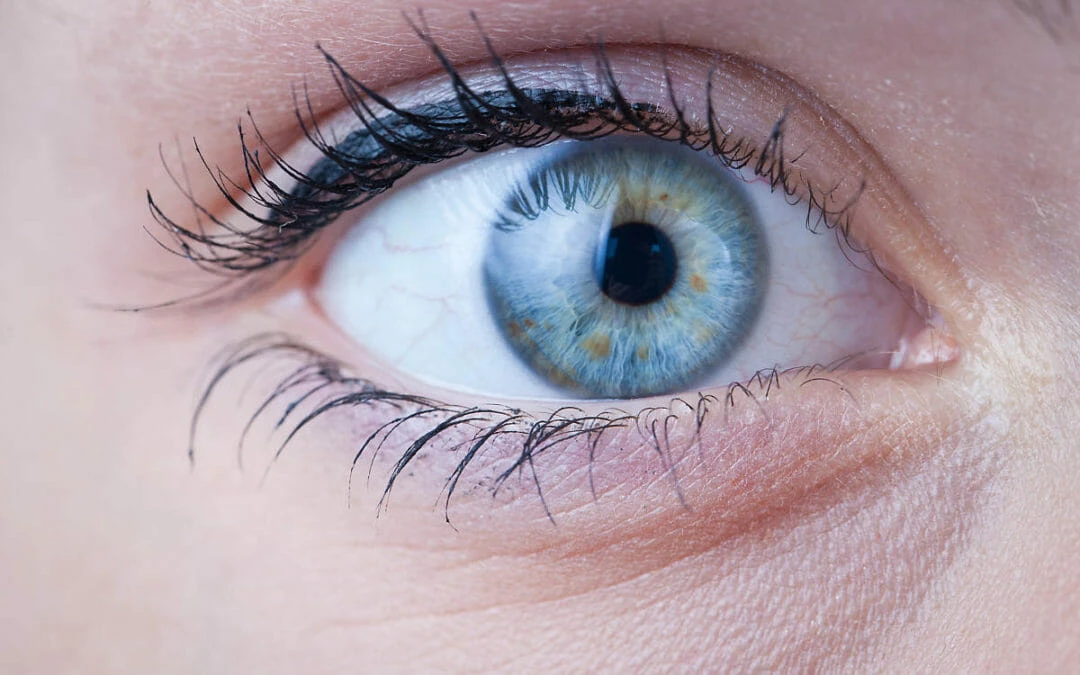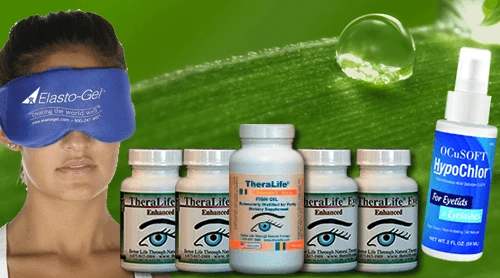Blepharitis vs. stye are two eye conditions that share common symptoms, but there is a major difference between them.
This article will explore the differences between blepharitis and stye in order to help differentiate these two eye conditions.
Furthermore, this article will discuss how each condition can be treated with different methods.
By understanding the distinctions between blepharitis and stye, sufferers of either condition can take appropriate steps towards alleviating their discomfort.
Symptoms Of Blepharitis
Blepharitis is a common eye condition that affects the eyelids, causing them to become red and swollen.
It is characterized by dry eyes, irritated eyelids, and flaking of skin on the lid margins.
The symptoms can range from mild to severe, with some people experiencing more pronounced signs such as crusting along the lash line or yellowish discharge from the eyes.
The cause of blepharitis has been debated for centuries: some believe it is caused by bacteria while others think allergies and dry eyes are responsible.
Regardless of its exact origin, one thing is certain; it typically responds well to treatment if caught early enough.
Several treatments exist including warm compresses, artificial tears, antibiotics, and anti-inflammatory medications.
Left untreated however, these symptoms may worsen over time leading to further complications such as blurred vision or sensitivity to light due to inflammation of the cornea and conjunctiva caused by dry eyes..
As such, proper diagnosis and management are essential in managing this condition effectively.
Symptoms Of Stye
Blepharitis vs. stye are both common eye conditions, but they have different symptoms.
Blepharitis is an inflammation of the eyelids which can cause redness, itching, burning sensation, crusting around the eyelashes, and flaking of the skin on the lids.
Styes usually appear as a lump or bump on the edge of the eyelid that may be filled with pus or fluid. They can cause pain, redness, tenderness to touch, swelling of the affected area, and tearing.
When it comes to risk factors for developing either condition, there are some similarities between blepharitis and stye.
People who suffer from allergies, dry eyes or rosacea may find themselves more prone to these two conditions due to environmental triggers such as dust mites and air pollution.
Additionally, individuals who wear contact lenses are at increased risk as bacteria builds up in their lenses over time causing irritation and potential infection. Individuals should take steps to reduce their exposure to possible irritants by cleaning their contacts regularly and wearing protective eyewear when outdoors.
Both blepharitis vs. stye require medical attention in order to avoid complications such as vision loss or permanent damage to the eye tissue.
It is important for patients suffering from any kind of eye discomfort or irritation to seek out professional advice so that proper treatment can be administered early before any long-term effects set in.
Treatment options vary depending on the type of condition being treated but typically involve antibiotics and other medications along with lifestyle changes like reducing stress levels and avoiding activities that put strain on the eyes.
With prompt diagnosis and appropriate management strategies, most cases can be resolved quickly without further complication.
In understanding causes of blepharitis it is essential to recognize various contributing factors including genetics, poor hygiene habits, contact lens use, hormones fluctuations during adolescence or pregnancy periods, underlying health issues such as diabetes mellitus or autoimmune disorders etc., all play a role in increasing one’s susceptibility towards this chronic ocular disorder.
Causes Of Blepharitis
Blepharitis is an inflammation of the eyelid that can cause redness, soreness and dandruff-like scales on the lids. It can also be accompanied by itching, burning or a feeling of grittiness in the eye itself. The causes of blepharitis are numerous:
1. Bacterial infection – Blepharitis may be caused by bacteria such as Staphylococcus or Streptococcus species. These organisms normally live on the skin without causing harm, but if they become imbalanced then it can lead to blepharitis.
2. Allergies – Some people with allergies may develop blepharitis due to allergic reactions triggered by exposure to pollen, dust mites, pet hair or other irritants in the environment.
3. Lifestyle factors – Poor hygiene habits and excessive use of makeup are risk factors for developing blepharitis because these practices reduce natural defenses against bacterial infections and can interfere with proper cleaning of eyelids.
Treatment options for blepharitis depend on its underlying cause but typically involve lid scrubs, warm compresses and antibiotic ointments and drops prescribed by a doctor. In some cases oral antibiotics may also be necessary to completely clear up symptoms of this eye condition. Understanding the potential causes of blepharitis helps patients take proactive steps towards avoiding future flare ups and managing existing symptoms more effectively. Transitioning into the subsequent section about ’causes of stye’, similar risk factors come into play when determining what leads to this uncomfortable eye condition as well.
Causes Of Stye
The causes of stye can be varied and complex, yet it is generally agreed upon that bacterial infections are the most common cause. In addition to bacteria, there are certain risk factors and environmental triggers that may increase one’s chances for developing a stye.
To begin with, blepharitis has been linked to an increased risk in developing a stye. It is thought that the inflammation from blepharitis weakens the eyelid glands which allows bacteria to accumulate on the lids’ surface more easily. Additionally, hormonal changes such as pregnancy or menstruation have also been associated with an increased chance of acquiring a stye.
Risk Factors
- Blepharitis
- Dermatological Conditions (e.g., Acne Rosacea)
- Poor Hygiene
Environmental Triggers
- Hormonal Changes (e.g., Pregnancy/Menstruation)
- Exposure to Contaminants (e.g., Mold Spores)
- Allergies
Furthermore, conditions like acne rosacea, poor hygiene practices and exposure to contaminants such as mold spores may lead to irritation and infection of the eye area resulting in a stye formation. Finally, allergies can also act as a trigger by causing inflammation in the eyes which can create an environment where bacterial growth thrives and leads to sty formation. With this in mind, it is important understand what diagnostic tests should be done when diagnosing eye conditions such as blepharitis vs stye.
Diagnosing Blepharitis Vs. Stye
Blepharitis is characterized by red, itchy, and swollen eyelids, along with the formation of dandruff-like scales on the eyelashes.
Styes are caused by a bacterial infection, most commonly staphylococcus, which results in the formation of a bump accompanied by pain, redness, and swelling.
Diagnosing blepharitis usually involves a physical exam of the eyelids and culture of the bacteria present.
To diagnose a stye, a physician may use an ophthalmoscope to examine the eye and eyelid, as well as collect a sample of the discharge from the stye.
Both blepharitis vs. stye can be treated with antibiotics, warm compresses, and artificial tears.
Furthermore, in some cases, blepharitis may require an additional procedure called meibomian gland expression, which involves massaging the eyelids to relieve blockages.
Symptoms Of Blepharitis
Eye conditions, such as blepharitis and stye, can cause discomfort and pain. To understand the difference between these two eye issues, it is important to know their specific symptoms.
Blepharitis is an inflammation of the eyelids characterized by redness, burning, itching, swelling and crusty debris on the margins of the lids. Symptoms may also include dry eyes or blurred vision due to blocked glands in the eyelid. It can be caused by a variety of factors including bacterial infection, allergies, excessive rubbing of eyes and poor eye hygiene.
Environmental triggers such as dirt and dust particles may aggravate existing cases of blepharitis or cause it if contact occurs frequently with inadequate protection for your eyes. Proper eye hygiene which includes using clean washcloths when washing your face or removing makeup before bed time can help prevent further irritation from environmental triggers. In addition to this basic care routine involving regular cleaning around the lashes and lid margin at least once a day will keep bacteria from building up.
With proper diagnosis and treatment plan that takes into account individual lifestyle habits, many people are able to lead symptom-free lives without experiencing any recurrence of blepharitis.
Causes Of Stye
Styes are caused by bacteria that grows on the eyelid, often from poor hygiene or environmental exposure. They can be brought on by a variety of genetic factors such as allergies and hormonal changes during puberty which cause an overgrowth of glands in the eyelids.
Environmental exposures like dirt, dust particles, and contact lenses can also lead to styes if they don’t come with adequate protection for your eyes. Additionally, people who rub their eyes too much may irritate the skin around them which could potentially trigger a stye.
It is important to practice good eye hygiene habits in order to avoid styes occurring. This means regularly cleaning around the lashes and lid margin at least once per day and washing away any debris before bedtime. Wearing protective eyewear when outdoors should also be considered to help minimize one’s risk of developing a stye due to environmental triggers.
In conclusion, proper diagnosis and treatment plans that take into account individual lifestyle habits are essential for avoiding blepharitis vs. stye recurrences. With these measures in place along with regular cleaning habits, many people can manage symptoms associated with these conditions without experiencing further discomfort or pain.
Diagnostic Tests For Both
When diagnosing blepharitis vs. stye, visual signs should be taken into account. This may include redness of the eyelid margin, dandruff-like debris on the lid margins, swollen and tender lids, and crusting or discharge from the eyes.
Additionally, home remedies such as warm compresses can also help to relieve discomfort associated with these conditions. While they might provide temporary relief, it is important that a proper diagnosis is received before any further treatment plans are undertaken.
For more complex cases, diagnostic tests such as bacterial cultures or blood work may need to be conducted in order to identify any underlying causes for these symptoms. These tests can additionally reveal whether medical treatments are necessary or if other forms of management could potentially suffice for long term symptom control.
In some instances, antibiotics may even be prescribed by an eye doctor to treat infections caused by bacteria growths on the eyelids.
In summary, it is important to take all factors into consideration when managing blepharitis and styes so that an accurate diagnosis can be made. With this information at hand, individuals will have greater insight into which type of treatment plan would best suit their needs moving forward.
Treating Blepharitis
The eyes are a delicate part of the body and require special attention when it comes to anything from eye health to vision. Blepharitis vs stye, although similar in appearance, have distinct differences that can affect one’s sight if not properly treated.
A common symptom of blepharitis is irritation around the eyelids due to an accumulation of oils or bacteria on the base of each lash. Along with this irritating sensation, there may be crusting along the lid margin or swollen lids as well as redness and itching.
To treat blepharitis, many ophthalmologists suggest proper eye hygiene including:
* Cleaning your eyelid margins daily with eyelid cleanser.
* Applying warm compresses several times a day
* Avoiding rubbing your eyes
Itching, pain, swelling, tenderness — these could all be signs of a stye. A stye results from clogged meibomian glands which causes inflammation resulting in red bumps near the edge of the eyelid.
In order to reduce symptoms related to styes:
* Warm compresses applied multiple times per day will help reduce swelling
* Antibiotic ointments prescribed by a doctor should also be used according to instructions
* Cleaning away any discharge with cotton swab dipped in tea tree oil solution can also keep infection at bay
By understanding how both conditions differ and their respective treatments, individuals can take steps towards protecting their eyesight now and for years to come without having to worry about exacerbating either condition.
Treating Stye
Treating a stye typically involves the application of warm compresses to the area. This helps reduce inflammation and pain, as well as hastening the healing process.
In addition, it is also important for individuals with a stye to practice good eye hygiene by regularly cleaning their eyelids and rims with clear water or an antibacterial wash.
Lifestyle changes such as refraining from wearing contact lenses may be beneficial in some cases.
The use of antibiotics can help speed up recovery time, but they are not necessary in all cases. Oral antibiotics should only be taken if prescribed by a health care provider, while topical ointments and creams can provide relief without needing to ingest medication.
Steroid injections may also be used on larger styes that have been present for longer periods of time.
In order to prevent further episodes of either blepharitis or stye, regular hygiene practices should be adopted along with avoiding irritants that could cause flare-ups.
It is important to identify any underlying causes so that preventive measures can be taken accordingly.
To ensure optimal eye health, individuals should follow best practices related to nutrition and overall health maintenance in order to support healthy functioning of the eyes.
Moving forward, prevention of both conditions would benefit from understanding how these treatments work together in practice.
Prevention Of Both Conditions, Blepharitis Vs. Stye
While blepharitis vs. styes share the same symptoms, there are distinct differences between them. It is important to distinguish between these two conditions correctly in order to ensure that prevention and treatment methods are effective.
Prevention of both conditions begins with practicing proper hygiene habits such as regularly cleaning eyelids and lashes with a gentle cleanser or warm water. Additionally, lifestyle changes can help reduce the risk of developing either condition. Those with blepharitis should avoid sharing towels and facecloths, while those prone to stye infections may find it beneficial to remove contact lenses prior to bedtime.
Eating a balanced diet, drinking plenty of fluids throughout the day, refraining from touching eyes too often, and taking regular breaks when using computers for extended periods of time can also improve overall eye health. Furthermore, wearing sunglasses on sunny days will protect against UV radiation which could potentially trigger certain eye illnesses or irritations.
It is recommended that individuals visit an eye doctor if they experience frequent dryness or irritation around their eyes so that any underlying dry eye issues can be identified quickly and treated accordingly. Regularly following good hygiene practices along with making healthy lifestyle choices is key to maintaining optimal vision health without having to worry about recurrent episodes of blepharitis or styes.
Frequently Asked Questions
How Long Do Blepharitis vs. Stye Normally Last?
Blepharitis vs. stye are both common eye conditions with varying degrees of severity.
The duration of a blepharitis or stye can vary depending on the individual’s symptom management, risk factors, and overall health.
Generally speaking, mild cases of either condition may last for a few days to several weeks, while severe cases may take longer to resolve; up to two months or more in some instances.
It is important to seek medical advice if symptoms persist beyond this time frame as further treatment may be required.
Are There Any Home Remedies That Can Be Used To Treat Blepharitis Vs. Stye?
Are there any home remedies that can be used to treat blepharitis vs. stye?
This is a common question asked by those suffering from eye conditions. While some may find relief from topical treatments or antibiotics, there are also numerous natural methods available for treating both blepharitis and stye.
Allergic reactions should be taken into consideration before trying any remedy, as well as diet changes which could reduce inflammation in the area. Therefore, it is important to research different options prior to beginning any treatment routine.
Is Blepharitis Or Stye More Contagious?
Blepharitis and stye are both ocular conditions that cause inflammation of the eyelids.
While blepharitis is a chronic condition, styes are acute in nature and can be contagious if not managed properly with strict symptom management and eye hygiene.
Styes have an increased risk of contagion due to their external presentation on the eyelid whereas blepharitis does not pose such risks as it usually occurs internally.
Therefore, when comparing blepharitis vs stye from a contagious standpoint, it is more likely for a person to contract a stye than blepharitis.
Is It Possible To Have Both Blepharitis Vs. Stye At The Same Time?
Studies have found that up to 30% of patients with blepharitis, an inflammation of the eyelid, may also develop a stye.
A stye is an infection caused by blocked glands near the base of the eyelash and can be accompanied by other symptoms such as redness or swelling.
Although having both conditions at one time is relatively common, it is important to seek medical attention as soon as possible for symptom management and lifestyle changes if either condition develops.
Are There Any Lifestyle Habits That Can Help Reduce The Risk Of Developing Blepharitis Vs. Stye?
Proper eye hygiene and stress relief are important lifestyle habits that can help reduce the risk of developing blepharitis vs. stye.
Regularly cleaning eyelids with a moistened cotton ball and mild soap can prevent accumulation of bacteria, oils, and dirt which may cause inflammation.
Additionally, reducing stress levels through exercise, yoga, massage therapy, or other relaxation techniques may also be beneficial in preventing the onset of these conditions.
Conclusion
The battle between blepharitis vs. stye is an ongoing one. Both can cause similar symptoms, yet differ in duration and contagiousness. Although both can be treated with home remedies, the risk of developing either can be reduced through lifestyle habits such as regular eye hygiene or avoiding contact with those who have a current infection.
As for having both at once, it is possible but rare. To illustrate this difference between blepharitis and stye, think of them as two sides of a coin: while they may look very similar on the surface, each side has its own distinct qualities that set it apart from the other.
When it comes to treating these conditions, understanding their differences will help you make informed decisions about which treatment plan is best suited to your needs.




